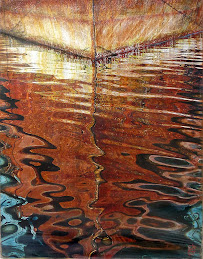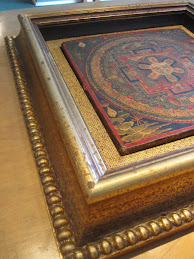 Antique Photos - After new mats and glass
Antique Photos - After new mats and glassOnce a piece of artwork is framed, it is framed for life—a common misconception that has taken its toll on many pieces of art. In fact, new framing products are continually being released to further the life of your artwork.
UV protecting glass, cotton rag mats and acid buffering materials were not commonly used or were cost prohibitive 15-20 years ago. It is a good idea to bring your framed art to your local framer about every 10 years to make sure your artwork is still in prime condition and to educate yourself on new products that may extend the life of the piece.
Glass
Arguably the best update you can make to preserve your framed art is an upgrade to conservation glass. UV protecting glass considerably extends the life of your artwork by minimizing fading. We never recommend hanging artwork in direct sunlight, but even indirect sunlight can cause fading. Your local framer can determine if the glass on your art is conservation or you may have a sticker on the back of your framing indicating what type of glass was used. Prices on UV proctecting glass have dropped to a range that is within reach of most consumers, and considering the value it preserves in your artwork, typically worth the investment.
Arguably the best update you can make to preserve your framed art is an upgrade to conservation glass. UV protecting glass considerably extends the life of your artwork by minimizing fading. We never recommend hanging artwork in direct sunlight, but even indirect sunlight can cause fading. Your local framer can determine if the glass on your art is conservation or you may have a sticker on the back of your framing indicating what type of glass was used. Prices on UV proctecting glass have dropped to a range that is within reach of most consumers, and considering the value it preserves in your artwork, typically worth the investment.
Mats
All of the mats commonly used in framing today are acid-free or 100 percent cotton rag. You may be able to determine what mats you have by looking at the bevels on the opening cut in the mat - are they yellowed and brown? Or crisp white? Cotton rag and acid-free mats will be white, paper mats yellow or brown. Yellowing is caused by acid, which can be transferred to your artwork touching the underside of that mat. Conservation mats will preserve art on paper and photos (and you might opt to choose new colors for a fresh look).
All of the mats commonly used in framing today are acid-free or 100 percent cotton rag. You may be able to determine what mats you have by looking at the bevels on the opening cut in the mat - are they yellowed and brown? Or crisp white? Cotton rag and acid-free mats will be white, paper mats yellow or brown. Yellowing is caused by acid, which can be transferred to your artwork touching the underside of that mat. Conservation mats will preserve art on paper and photos (and you might opt to choose new colors for a fresh look).
Frames
The frame is typically the most costly part of custom framing. Thankfully, in most cases, the frame can stay on the artwork for as long as you desire. Your local framer can usually cut mats and glass to fit the artwork and the existing frame.
The frame is typically the most costly part of custom framing. Thankfully, in most cases, the frame can stay on the artwork for as long as you desire. Your local framer can usually cut mats and glass to fit the artwork and the existing frame.
Restoration
If you find that your artwork is damaged, don't panic. Art restoration companies can work miracles to breathe new life into damaged art. Don't consider anything ruined until you speak with an art restoration expert.
If you find that your artwork is damaged, don't panic. Art restoration companies can work miracles to breathe new life into damaged art. Don't consider anything ruined until you speak with an art restoration expert.
How is your artwork doing? Have you taken a look at it lately? Remember, you framed it for a reason! It may have personal importance or monetary value, either way, consider taking framed artwork to your local framer who can easily help you with preservation and updating.










